Вы здесь
Geopark in Bektau Ata Mountains.
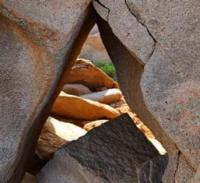
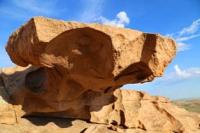
Travel to mountains Bektau Ata.
"The joy of seeing and understanding is nature's most beautiful gift."
Albert Einstein.
Adventure Tours in Kazakhstan.
Bektau Ata Mountains, a distinct rocky outcrop amidst the steppe, range in elevation from 600 to 1,214 meters above sea level. They are located 71 kilometers from northwestern part of Lake Balkhash and city of Balkhash, east of Tabakenttatyr (Kentarlau) Valley, with its vast, gently rolling plains that transition into semi-desert zones, in Aktogay district of Karaganda region.
Bektau Ata mountain is perhaps the most remarkable place in the North Pre-Balkhash. From Kazakh its name is translated as “Holy High Mountain.” Basis for such name serve popular legends and beliefs that are still poorly studied. Noticed, for example, that after visiting here the cave, the childless couple got the long-awaited child.
Lonely, visible even at the distance of 100 km peak, yellowing in the surrounding steppe at an altitude of 600 m, without a hitch served as the guiding for caravans from the time of the Silk Road, one of the branches of which crossed Lake Balkhash.
The mountain is still now performs its guiding function and is known as the “Steppe Lighthouse” of the Northern Pre-Balkhash. Recognizing the outstanding role of Bektau Ata in the history of ethnicity and steppe navigation, we could assert that the geological essence of the rock massif is no less interesting.
Granite intrusion (or, as the geologists say, “pluton”) covers an area of approximately 213,91 square kilimetres. Granite with ages of about 245 - 255 million years (Late Permian - Early Triassic), is introduced into the Carboniferous – Permian effusives crumpled in a gentle fold of isometric shape - brachyanticline.
Bektau ata comprises piezo-quartz and optical fluorite deposit and consists of two large domes: Eastern with high and steep rocky peaks and less impressive the Western one with a relatively shallow roof. Roof of the massif, which largely coincides with the surface, has a complex topography with numerous ridges and small domes.
Granite in the shallow areas has clearly defined mattress separation; in the more fine-grained rocks, the separateness better expressed, and the less the thickness of individual plates. For more elevated areas massive structure of granite is typical, as well as blocky separation, sometimes forming intricate shapes.
In the granite are widely distributed veins of aplite having different dip angles - from horizontal to vertical, sometimes fancifully intercrossed. In the domes of granite massif pegmatite bodies with voids were formed. Pegmatite was formed in the process of intrusion formation, when the volatile components were accumulated in magma and formed the gas bubbles with the diameter greater than 10 m.
Enrichment with gases led to the temperature magma crystallization lowering and formation of pegmatite with well defined graphical structure. In the central part of such cells quartz-feldspar core and “cellar” are formed - a cavity, in which crystals of quartz, rock crystal, beryl, topaz, fluorite, and a number of other minerals are formed.
The mid of the “cellar” is filled with clay minerals. The better cellar part of the pegmatitic camera is expressed, the higher is its industrial value. Mining of rock crystal and optical fluorite was carried out here. Currently, within the massif about 1500 pegmatite bodies are known, more than 450 of which have already been explored and worked out.
Along with piezo-optic minerals crystals of orthite, ilmenite, columbite, samarskite, sphene, topaz, tinstone, wolframite, beryl, molybdenite, tourmaline, apatite, thorite, davidite and pyrite can be found in pegmatite. Numerous wells of round shape are found everywhere - they are the remnants of the pegmatite cells destroyed by weathering.
Pegmatite may also be confined to the vein rocks; in this case the cell has veined form. Around the mines where mining of piezo-quartz and optical fluorite was carried out, mass collection of samples by tourists is possible - the fragments of quartz, crystals, rauchtopaz, pegmatite crystals etc.
The landscape of granite massif Bektau Ata is unusual and extremely picturesque. Almost everywhere the naked curved roof of the massif resembles the giant waves of the ocean. Often, among them suddenly appear the sculptures of fantastic monsters - the combined works of nature and the imagination of tourists.
The most visited places are the top of the mountain and cave Aulie. There are also many other equally interesting sections, for example, Sarykulzha Mountain and some smaller granite domes. The advantages of this unique granite massif are numerous and incontrovertible.
There is an interesting proposal to establish an International Museum of Natural Phenomena in this place. This idea was substantiated by Moscow professor Igor Davidenko - former Kazakh geologist, who has traveled all the continents, the author of numerous scientific papers and books of poetry.
Bektau Ata mountain is located near the motorway Astana - Almaty, 71 km north to Balkhash city. It is easily accessible and very promising for the development of geo-tourism, but this process must take place under strict control. It is recommend to publish booklets, to include this object in the tourist and ecotourism brochures.
Geographic coordinates of Bektau Ata mountain range: N47 ° 27'04 E74 ° 46'33
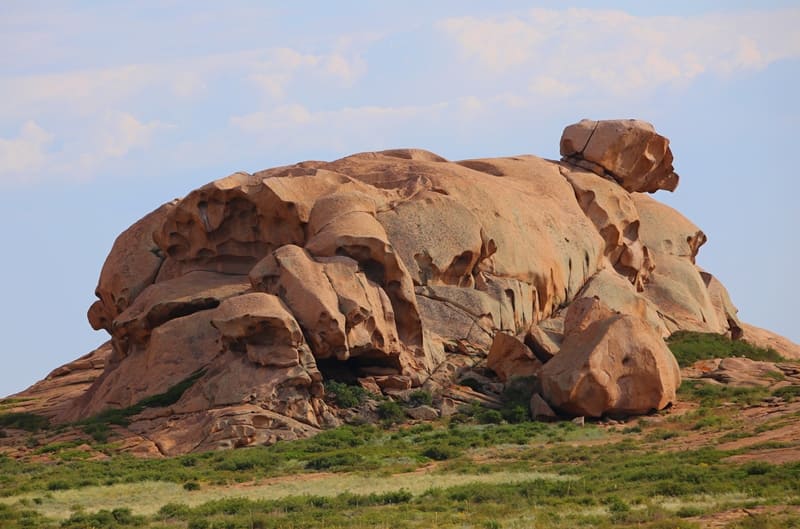
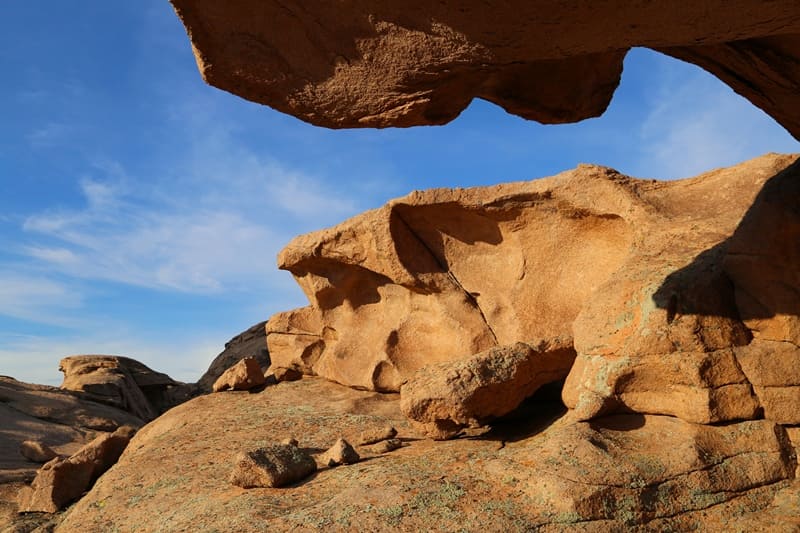

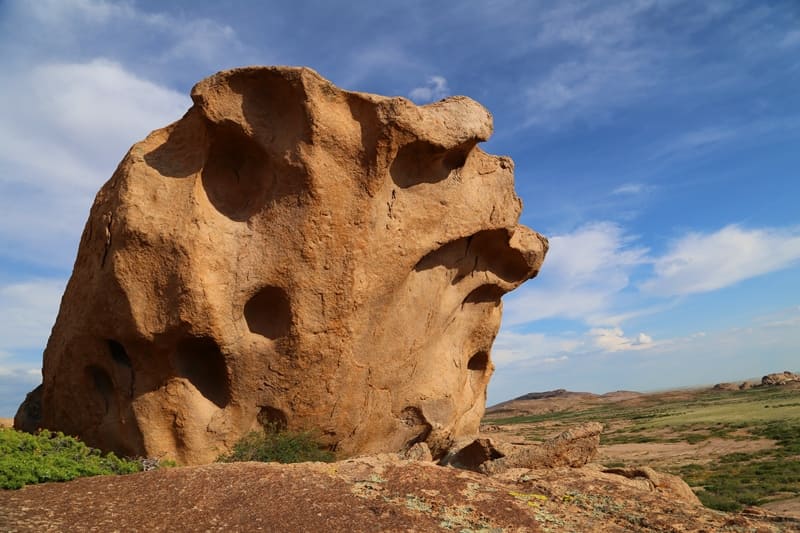
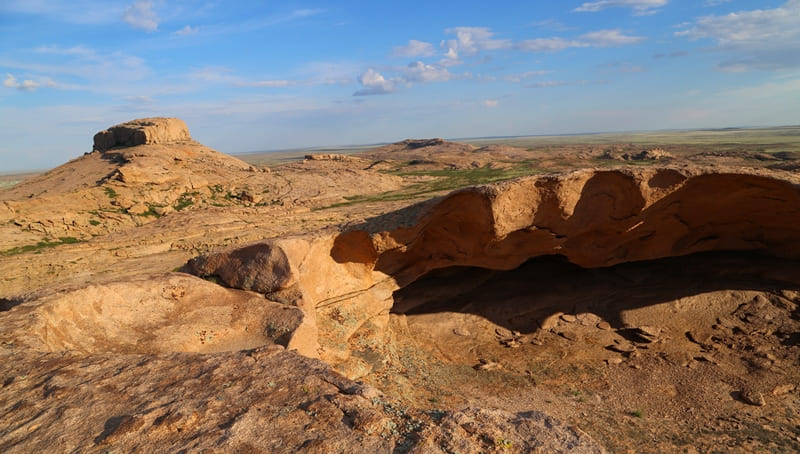
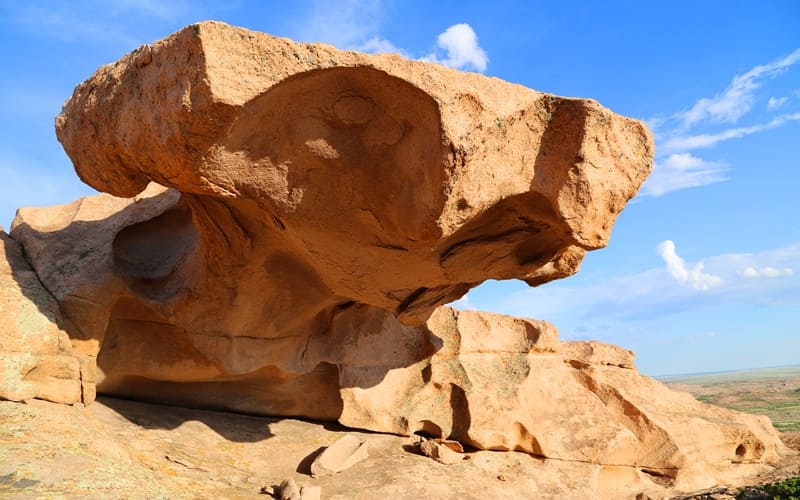
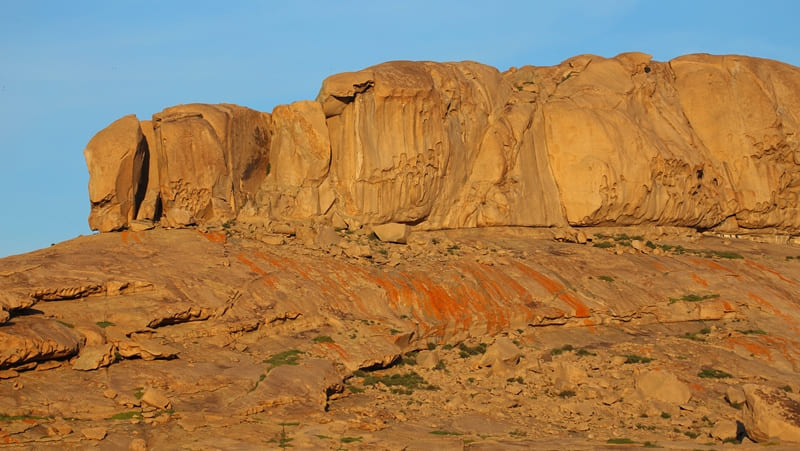

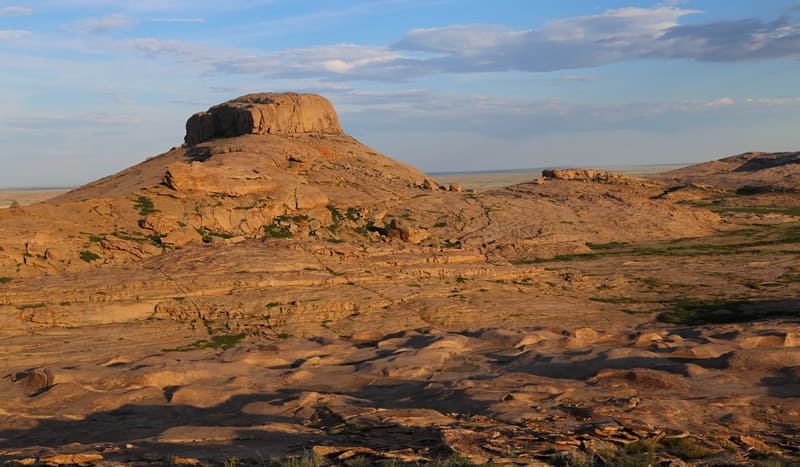

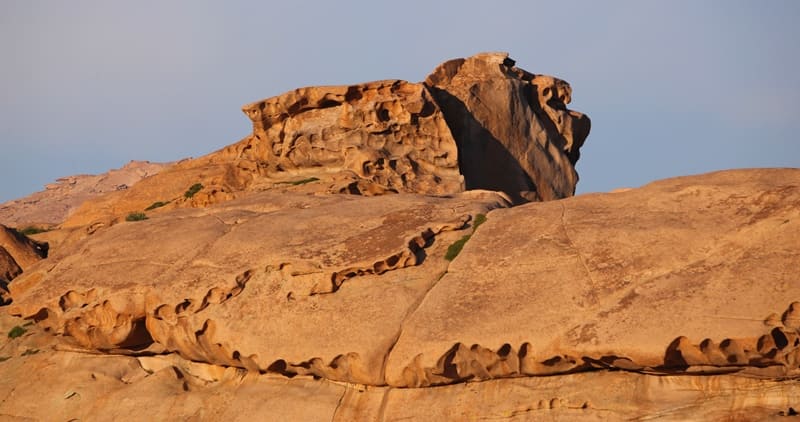
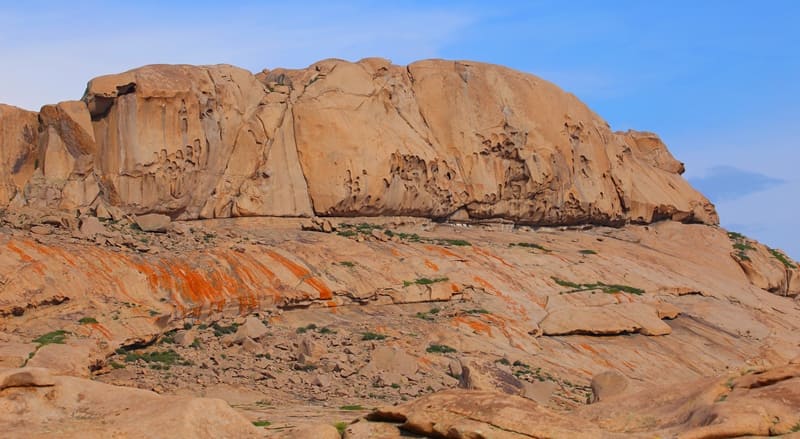
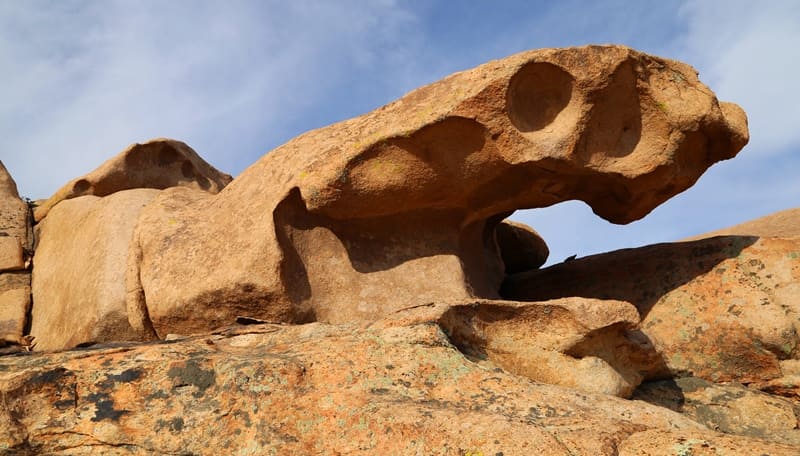
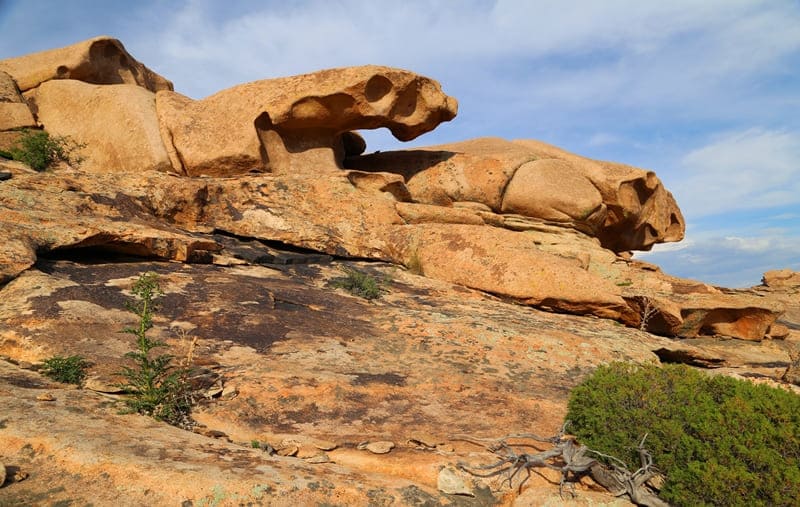
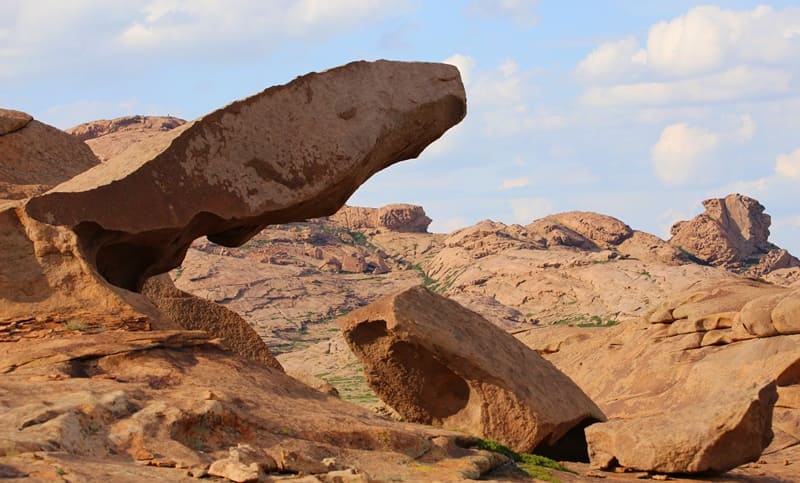
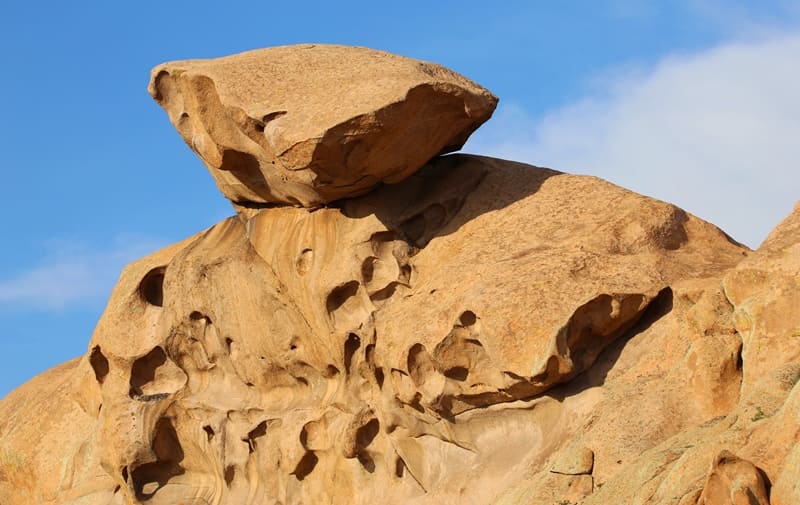
Authority:
Ilya Fishman, Yuliya Kazakova “Millions of years before the Silk Road. Geoparks in Kazakhstan”. Printing house “Idan“ Kommunal’naya, 39, Almaty, Kazakhstan http://yadi.sk/d/4_6z_blyoxnqe
Photos by:
Alexander Petrov.







